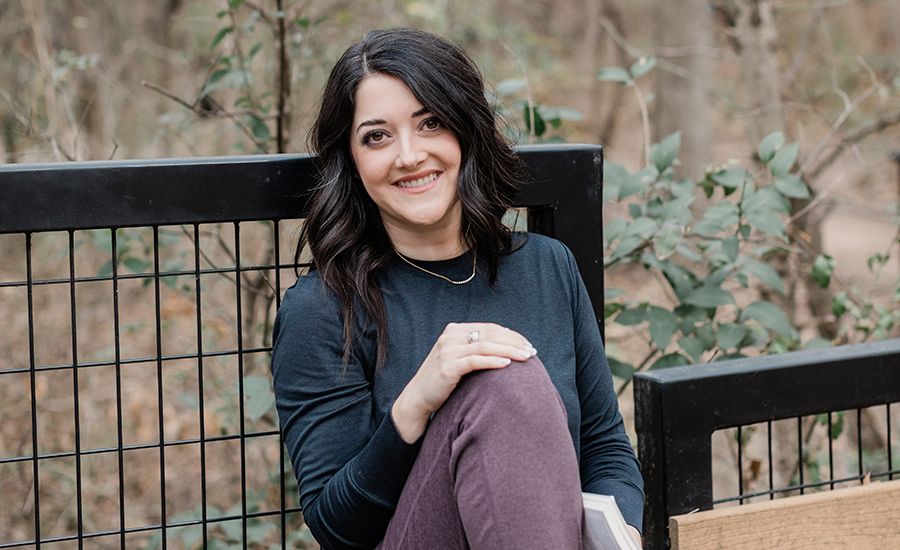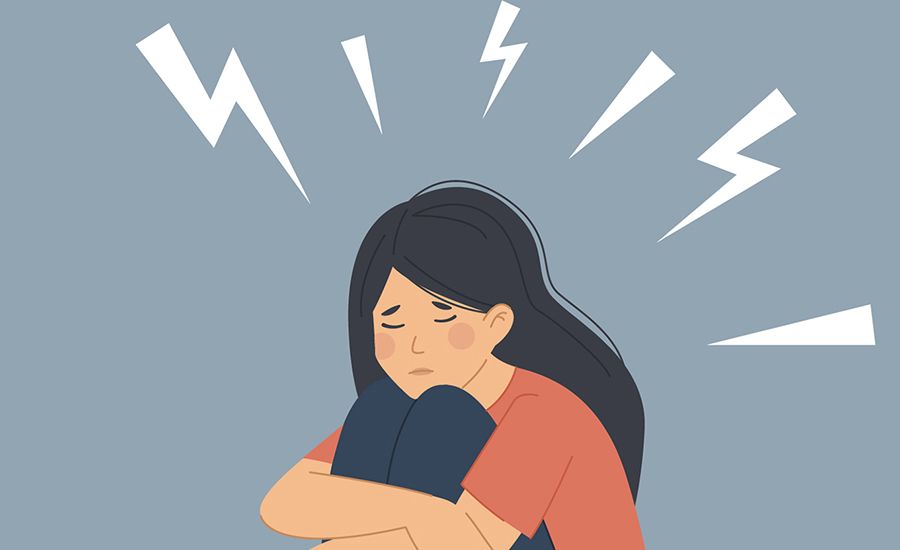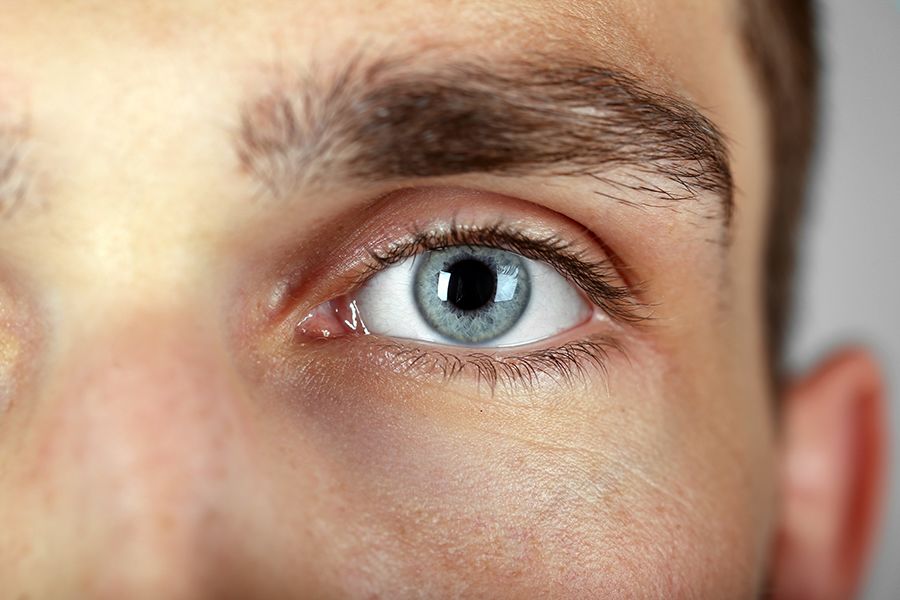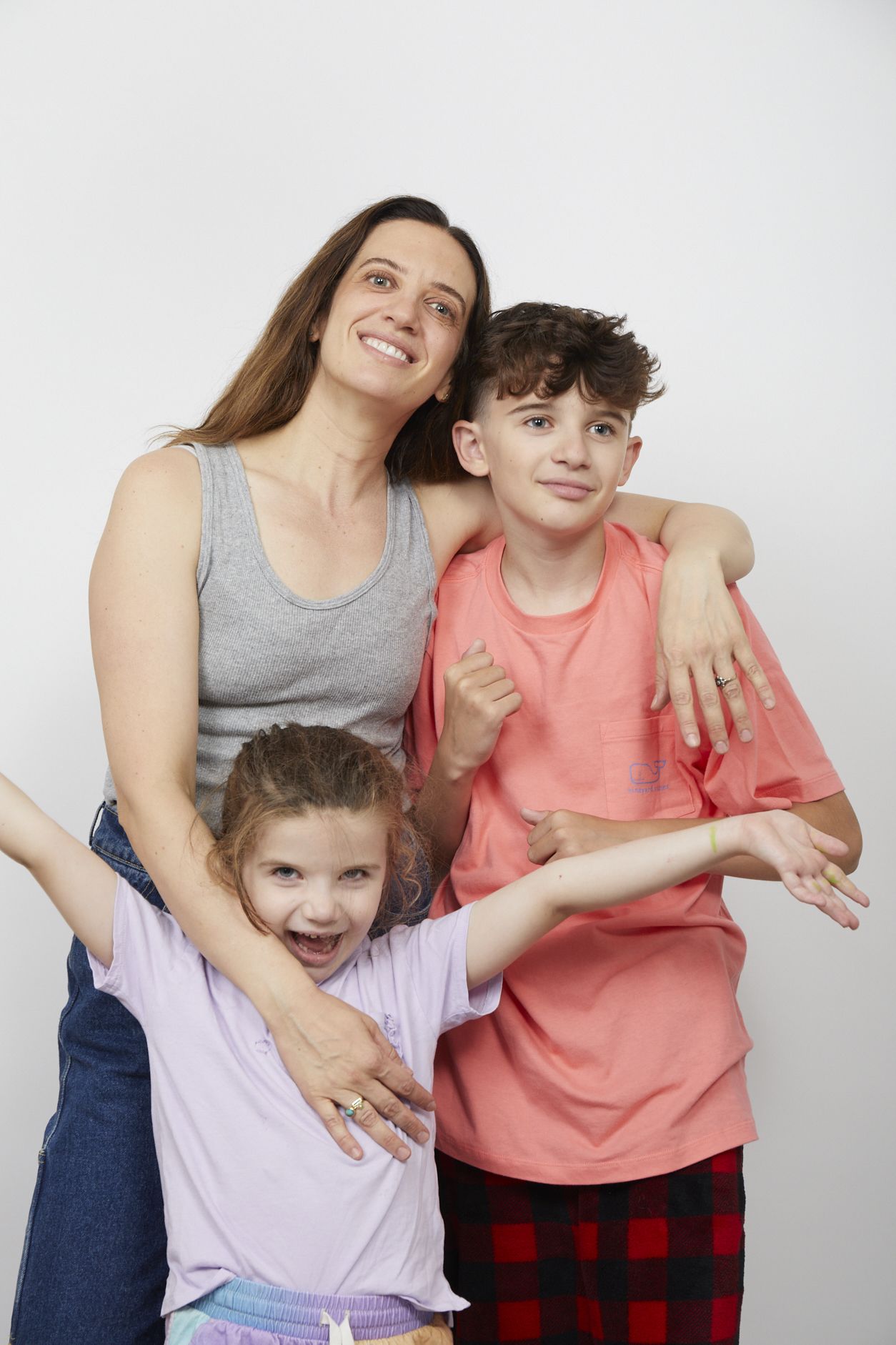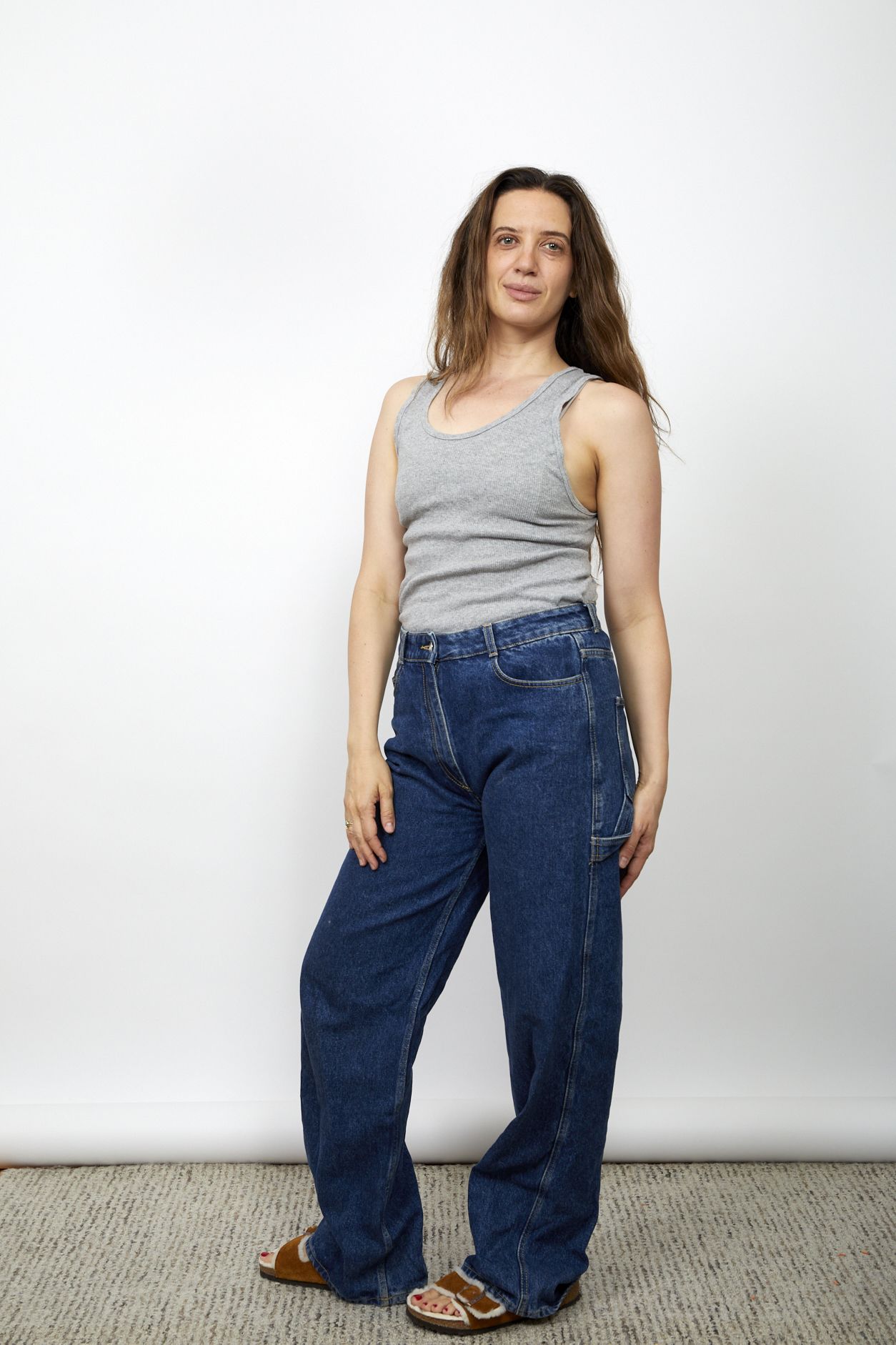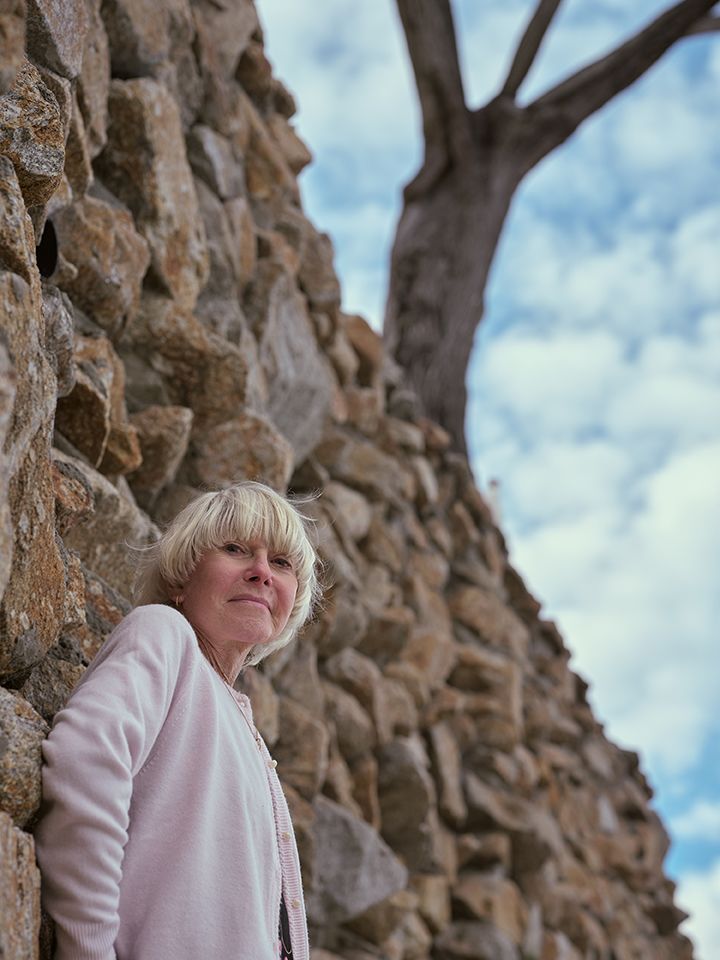Thyroid Eye Disease
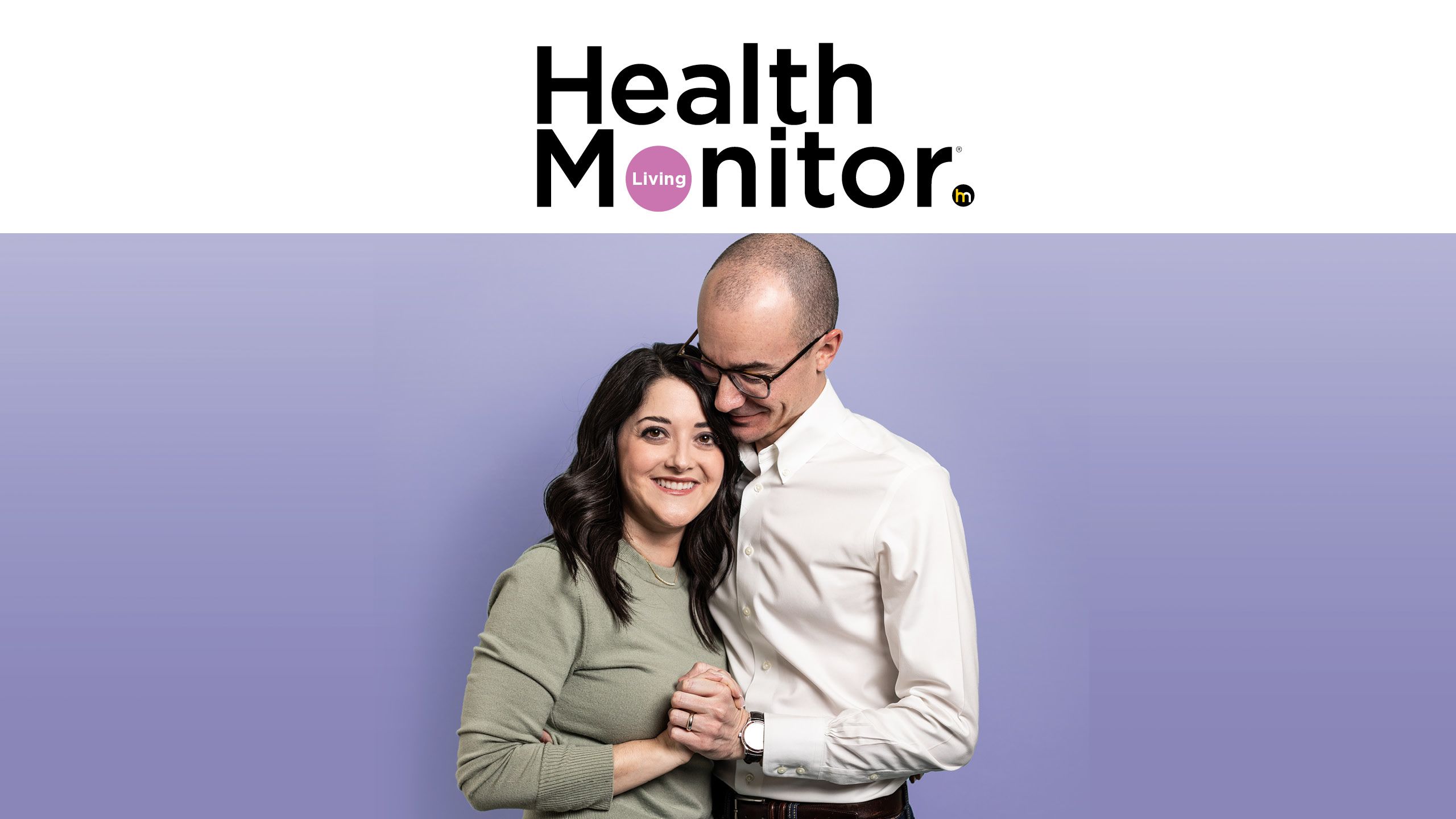
After more than 20 years of living with the discomfort of Graves’ and thyroid eye disease (TED), wife, mom and dentist Layla Lohmann finally found a treatment that worked. Now she’s sharing her story in the hope she can help others—and is spreading the message that there is a way to see clearly again.
CONTENTS
Health Monitor Living
Thyroid Eye Disease
Getting the facts on thyroid eye disease
Thyroid eye disease (TED), also known as Graves’ ophthalmopathy, occurs in about 50% of people diagnosed with Graves’ disease, and not only can it change your appearance, but it can also lead to vision loss. Think you might have it? Read on for the facts about the condition, as well as the common symptoms and who is at risk.
Understanding the treatment options
Good news: Today we have a better understanding of thyroid eye disease—and many different ways to help manage it!
“TED doesn’t define us!”
From finding a treatment that works to self-care makeup tricks and soothing ice packs, Layla, Suzy and Christine share the tips that help them thrive despite thyroid eye disease. See if their strategies can help you, too.
Anxious? Feeling down?
You can get off the emotional roller coaster
Thyroid eye disease can come with a lot of difficult symptoms, but some of the toughest are mental—things like anxiety about the future and even an increased risk for depression. If you’re facing these challenges, you’re far from alone—and luckily, there are ways to help you cope.
Think you know all the facts on TED?
Answer the questions below to find out if you’re up-to-date on your knowledge of thyroid eye disease.
Getting the facts on thyroid eye disease

Thyroid eye disease (TED), also known as Graves’ ophthalmopathy, occurs in about 50% of people diagnosed with Graves’ disease. Graves’ is an autoimmune disorder where the body attacks the thyroid, causing an overproduction of hormones. In TED, that same immune dysfunction causes the body to attack the muscle and fat tissue behind the eyes. As a result, inflammation and scarring occur, which can lead to eye changes, such as bulging eyes (proptosis), misaligned eyes (strabismus) and double vision (diplopia).
_________
Symptoms of TED include:
- Dry, gritty eyes
- Red, swollen eyes and eyelids
- Watery eyes
- Eye pain
- Sensitivity to light
- Bulging eyes (proptosis)
- Double vision (diplopia)
- Eyelids unable to close properly (retraction)
TED can come on strong
TED often starts suddenly, causing symptoms like redness, dryness and swelling, and can quickly get worse, setting the stage for scarring and serious vision damage. This is known as the acute phase of TED, which can last anywhere from six months to two years. The acute phase of TED is followed by a chronic, or “inactive” phase, but that doesn’t mean the disease has gone away or that you won’t have symptoms. In fact, if it’s left untreated, TED can flare again when exposed to a trigger like stress or cigarette smoking.
What that means for you
Whether you have just been diagnosed with TED, or have been living with either or both for a while, it can be helpful to learn the latest about the condition and how it can be managed. Click here to find out about common treatment options, or here to get inspired by others living with the condition. And make sure you’re open and honest about how you’re feeling with your healthcare team—there’s no reason to suffer with the symptoms in silence!
Understanding the treatment options

First and foremost, it’s important to understand that TED is a separate disease from Graves’, so it requires its own treatment—preferably in the acute phase. That’s the best way to minimize scarring and prevent serious eye damage. Current treatments can relieve the symptoms of TED, and one medication is now FDA-approved to address TED at the source. Options include:
Eye drops or gels.
These can relieve the dry, gritty feeling that comes with TED, and in the case of eyelids that won’t close (retracted eyelids), lubricated gels can keep eyes moist overnight.
Steroids.
Although steroids can help bring down swelling, over the long term, they can cause weight gain and increase the risk of infection. So it’s common to start at a high dose and slowly taper off.
Orbital radiotherapy (ORT).
With this treatment, radiation is aimed at the inflamed area behind the eye to help reduce bulging and other symptoms.
Surgery.
When TED is in the chronic phase, these surgeries may be performed in the following order:
- Orbital decompression surgery to help the eyelids close better, minimize bulging, ease eye pain and potentially improve double vision.
- Strabismus surgery to help correct remaining double vision after the first surgery and improve forward vision.
- Eyelid repositioning surgery to return eyelids to a more normal position and relieve dryness.
- Face sculpting to help the eyes and face look better.
Monoclonal antibody.
One treatment has been FDA approved to treat TED at the source. It works by blocking the IGF1 receptor, a protein that leads to overgrowth of fat and muscle behind the eye. As a result, the bulging, redness, pain and swelling go down. The drug can improve double vision (in some cases, making it go away) and even help improve physical appearance so surgery isn’t needed. The medication is given by infusion, once every three weeks, for a total of eight infusions.





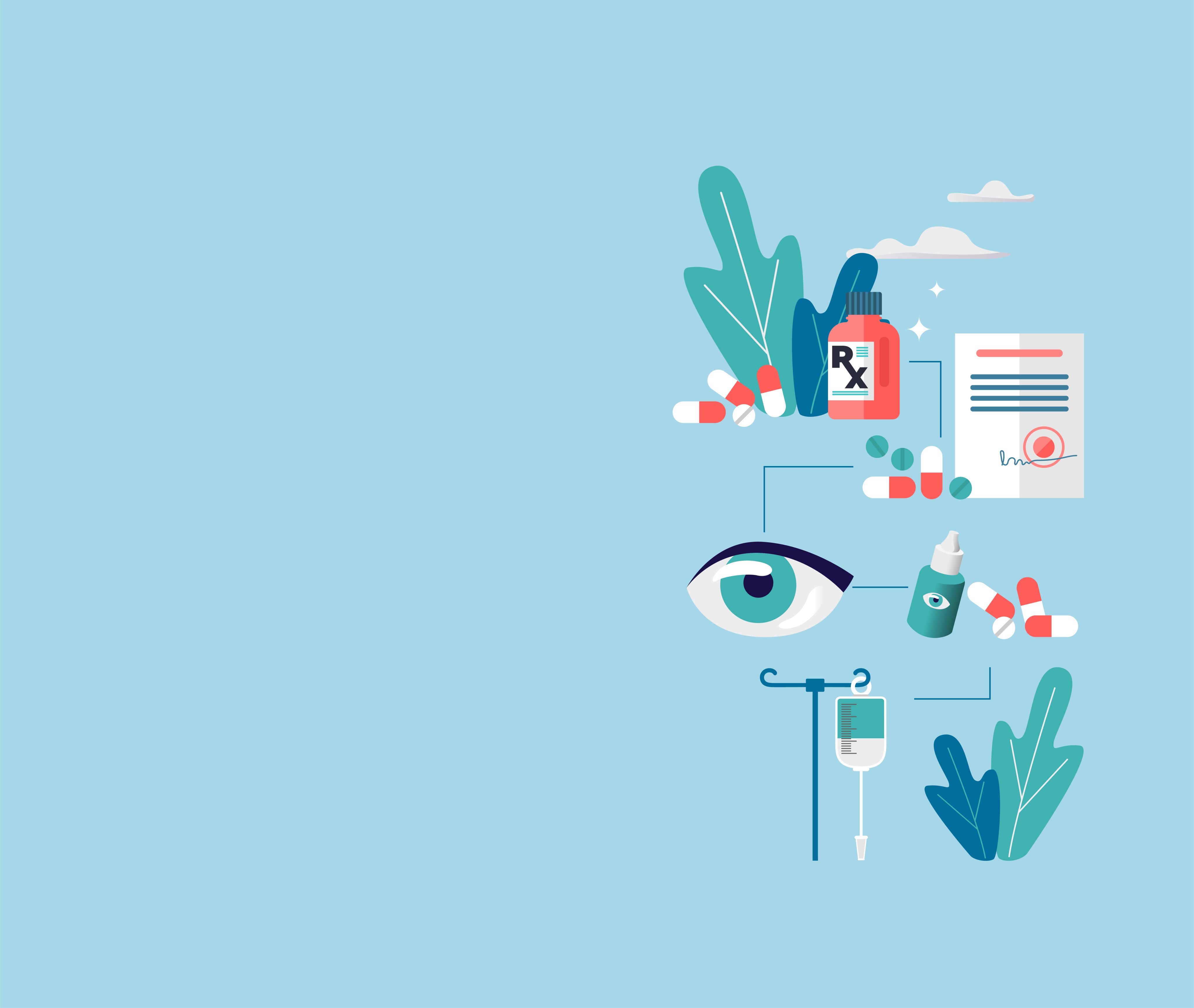
“TED doesn’t define us!”
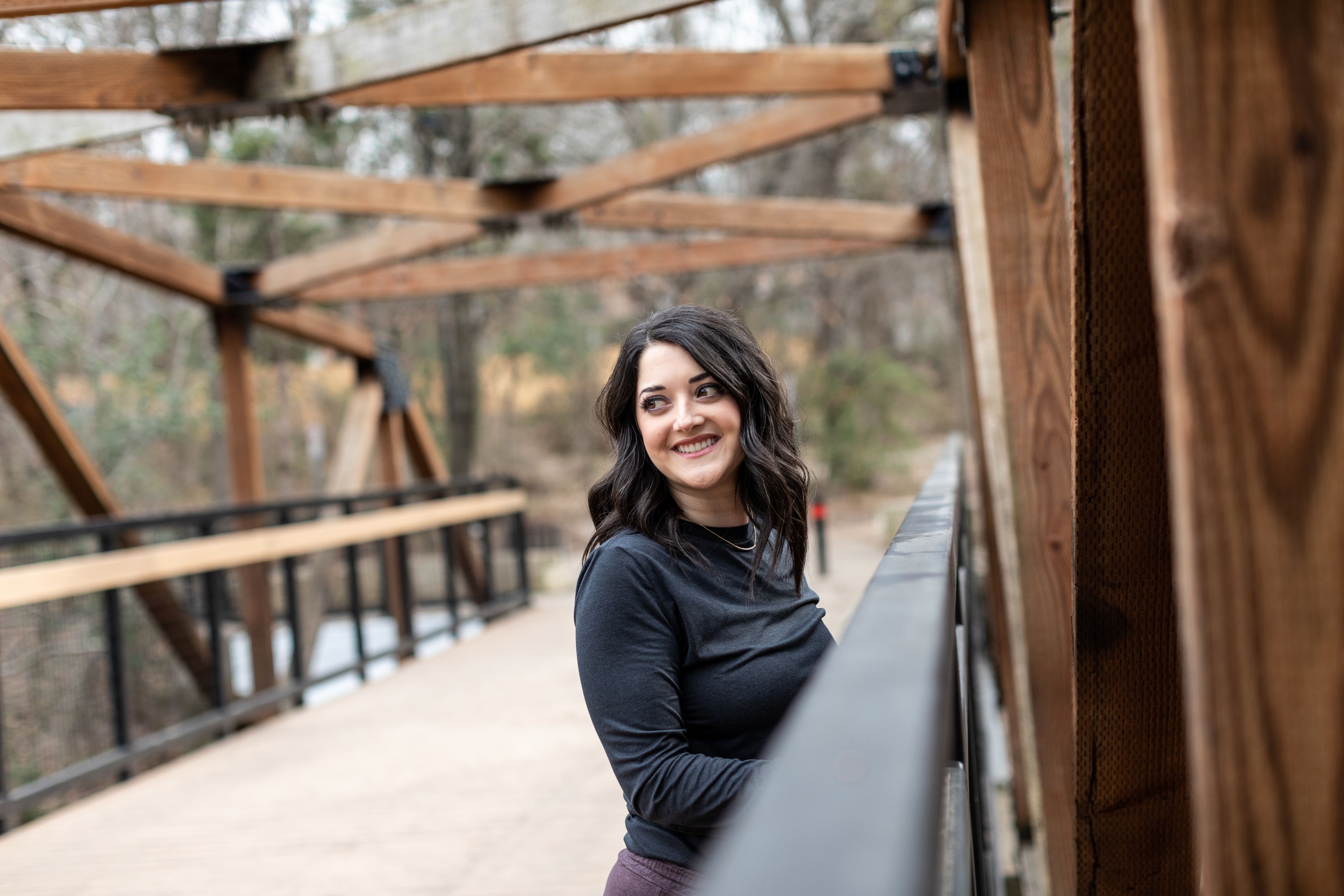
From finding a treatment that works to self-care makeup tricks and soothing ice packs, Layla, Suzy and Christine share the tips that help them thrive despite thyroid eye disease. See if their strategies can help you, too.
“My future finally looks bright!”
____________________
LAYLA LOHMANN
Today, Layla Chafi Lohmann’s eyes feel good—she’s able to go outside without having to avoid sunny days, she’s waking up without feeling like there’s grit in her eyes and she’s free of headaches caused by double vision. But it wasn’t long ago that she thought these symptoms were just “a part of life” and one more thing she had to deal with on a daily basis.
Layla’s journey with thyroid eye disease (TED) began when she was 12 years old following a diagnosis of Graves’ disease, a condition where the immune system attacks the thyroid and causes an overproduction of thyroid hormones. One of the first symptoms of her Graves’, in fact, was the telltale bulging eyeballs associated with TED, which is when that same immune malfunction that causes the body to attack the thyroid also attacks the muscle and tissue behind the eyes.
At the time, there was little doctors could offer Layla to treat the TED, but they did opt to remove her thyroid when she was 15.
“I mistakenly believed that removing my thyroid would cure both conditions, so even though I was still experiencing severe dry eye, redness and tenderness after the surgery, I just chalked it up to allergies.”
“I needed a better answer!”
Fast forward to 2015, Layla, now a dentist, is married to her husband, David, and pregnant with her son, Lucas, when her eye symptoms take a sudden turn for the worse, including debilitating headaches and double vision.
“That’s when my doctor explained how TED works—that even though my thyroid was gone, the immune malfunction that caused my Graves’ was still active in my body and was attacking my eyes.”
Luckily, after she gave birth, the symptoms subsided, making it a bit more bearable for Layla with the help of steroids and eye drops. And her downward vision wasn’t impacted, which was very important for her career as a dentist.
But while her ophthalmologist assured her the eye symptoms would not likely surge again even with another pregnancy, that turned out to be untrue when she became pregnant with her daughter, Nora. In fact, she says, “The first sign I had that made me suspect I might be pregnant again was that the double vision suddenly returned!”
While her symptoms decreased again after she gave birth, they still disrupted her day-to-day life. “I didn’t enjoy going to my son’s soccer games because being outside in the sun hurt my eyes.” Not only did she hate missing out on those moments, she says, “it really opened up how I felt as a kid where people would call me lazy for staying indoors and not participating in things.”
So she went back to her doctor and asked if there was anything else she could try. And that’s when he mentioned there was a new biologic medication that had recently been approved to treat TED.
“I said sign me up!” laughs Layla.
“I couldn’t believe the difference”
Layla started the infusions and by the third round, to her amazement, she found relief.
“I was in shock! It eased symptoms I didn’t even realize I was having, like the dry eye in the mornings, because I’d lived with them so long I thought they were normal and everyone felt that way. For the first time in 26 years, my eyes weren’t bothering me!”
That’s why Layla was dismayed when production of the drug (among others) was ceased in 2020 so manufacturers could concentrate on producing the COVID-19 vaccine. Even after it was put back on the market, she found she had to battle her insurance for continued access when her symptoms would return.
Frustrated, Layla decided she needed to take action and became a patient advocate with the TED Community Organization to fight not just for her own access to her medication, but for other patients, too.
“I’m a healthcare provider with resources, and if this is what I have to go through to get access to this medication, I can’t imagine somebody who doesn’t have my support. That’s why I’m fighting these battles,” she says.
“Now I’m looking forward”
Today, Layla is continuing to get infusions of the medication, and is still working to help others gain access to the drug that she says “changed my whole life.”
“I’m in a good place right now. I go to my son’s soccer games, I go outside and play with my kids. It’s been so empowering—this medication has just been a game-changer.”
Photo by Brandon Jones
Photo by Brandon Jones
Here, Layla shares her top tips for conquering TED…
Find help for access. If you’re having trouble getting your insurance company to cover your medication, Layla suggests contacting patient advocacy groups like the Patient Access Network Foundation (panfoundation.org) or asking the manufacturer of the drug your doctor recommends if they have any patient liaisons. She explains these advocates are great because, “While I’m taking care of my kids, my husband and myself, this person was taking care of me and trying to get me the medication that I need!”
Communicate with your kids. Children often don’t have a filter, which means kids of people who have TED sometimes hear things about their mom or dad’s eyes at school. For her son, who is now 8, she says letting him know he doesn’t have to protect her is important. “I try to talk to him to normalize it,” she explains. “I say, ‘Mommy’s eyes sometimes pop out, and people may say things to you. If anyone makes you feel uncomfortable, just let me know, and we’ll talk it out together.”
Try tinted glasses. Layla likes wearing blue light-blocking tinted glasses indoors to help on the days when her eyes are feeling sensitive to help reduce glare. This has been an upgrade from when she used to wear sunglasses indoors! “People just thought I was trying to be cool!” she laughs.
Hear more about Layla’s journey with thyroid eye disease in her own words.
“Be patient and research!”
____________________
SUZY GERNSTEIN
Overwhelmed with juggling her role as a mom to her then 2-year-old son, Harvey, and her job as a makeup artist, Suzy Gerstein first took the TED symptoms she experienced in 2014 as simple fatigue.
“I wasn’t sleeping,” she recalls. “It was easy to chalk things up to being tired, but I knew other members of my family had had thyroid issues, so that possibility was also on my mind.”
When she developed a lump in her throat and stopped being able to fully close her eyelids, she knew something serious was going on and made an appointment with her doctor.
That resulted in a triple whammy diagnosis: Graves’ disease, thyroid eye disease (TED) and thyroid cancer.
She had surgery to remove her thyroid but was also eager to have surgery to help her eye issues. “I constantly felt like I had an eyelash in my eye,” she recalls. “And as someone who works in an aesthetic-based industry, I also had the trauma of a changing face.”
A year after being pronounced cancer-free, she underwent her eye surgery. She now wishes she had been a little less eager and had taken more time to meet with surgeons and understand the procedure. She was surprised both by the level of pain and the uneven results and lid drooping she experienced after. Now seven surgeries in (and with a doctor she’s comfortable with), she says, “I’m finally happy with how it’s healed.”
Along the way, she’s also come to redefine beauty and is giving herself more grace. “I look at a recent picture and I’m like, Okay, I like her more. She’s got some scars, but she’s earned them. There’s a beauty to that.”
Here, Suzy shares the other methods she used to get control of her TED…
Think gentle with eye makeup. Suzy finds staying away from waterproof eyeliner—especially along the inner line of her eyes—helps ease her eye issues, as does skipping mascara some days to give her eyes a break. To take her makeup off at night, she exclusively uses micellar water, which is gentle and easily removes anything she’s applied. “It feels nice and refreshing, and I don’t have to tug at my eyes, which is a big no-no.” Her favorite: Micellar Cleansing Water All-in-1 Waterproof Makeup Remover ($11.99, Ulta.com).
Find ways to destress. After her diagnosis, Suzy had to teach herself how to slow down. “There was a time I disliked massages because I literally couldn’t sit still for that long and just relax. I would be crawling out of my skin!” But she kept at it and found she loves the art of Gua Sha massage (in which the skin is scraped with a special tool) as well as acupuncture. “I also used to fight breath work and meditation, but now I get it. It really is important to treat your whole self and your well-being, especially when battling a chronic illness.”
Don’t be afraid to ask for help. If Suzy had to do it all over again, she says she’d lean more on others. “I would have had more childcare and more familial support,” she says. These days she’s gotten better at speaking up when she needs a break, and she’s found the people around her eager to help. “People want to be there for you—let them! Tell them how! You think you’re being a burden, but actually they are grateful. It probably makes you feel good to help people—this is also true for the others in your life!”
Photo by David Engelhardt
Photo by David Engelhardt
Photo by David Engelhardt
Photo by David Engelhardt
Photo by MOSS MEDIA CARMEL PHOTOGRAPHY
Photo by MOSS MEDIA CARMEL PHOTOGRAPHY
“Seek your own joy!”
____________________
CHRISTINE GUSTAFSON
Today, Christine Gustafson is the founder of the TED Community Organization, but in 2009, she was simply a patient with both Graves’ disease and TED. And the day-to-day reality of living with bulging, swollen eyes was taking its toll.
“I was actually frightening little children!” she recalls. “I felt very isolated and alone.” In fact, it would be another 12 years before she met another patient in her shoes.
She underwent her first eye surgery to correct the bulging in 2012 and has since had six more, including decompression surgery, in which the space behind the eyes is cleared out to allow the eyes to move back. She faced complications along the way like double and even chaotic vision in which things in her line of sight would appear chopped up or out of order, but she tried to stay positive.
Luckily, her last surgery in 2022 was a success—not only are her eyes symmetrical, but she now has nearly 20/20 vision and no longer sees double. That same year she decided to pay it forward by founding the TED Community Organization to create “a one-stop place for education, support and community” after trying to help a fellow patient she met online find educational resources. “It became clear that this was a great need and something I could help with,” she explains. She says of her fellow patients, “We need each other. We seem to do better in a community!”
Photo by MOSS MEDIA CARMEL PHOTOGRAPHY
Photo by MOSS MEDIA CARMEL PHOTOGRAPHY
Here, Christine shares some of the advice she wished she’d had when first diagnosed…
Plan for discomfort. Having strategies on-hand can be a lifesaver when eye discomfort from TED hits. Christine now makes sure she always has the following stocked up in her house: “soothing eye drops, ice packs that I can put over my eyes to ease swelling, and pain medication.”
Find support. “Embarrassment and loneliness are primary to a TED diagnosis. Connecting with the TED community is a very important way for those affected by the condition to overcome these sizable roadblocks to a solution,” she says. That’s, after all, why she started the TED Community Organization. To find out more, visit tedcommunity.org.
Live your best life. Christine feels strongly that while TED impacts so many parts of a patient’s life, it’s important to try to find joy wherever you can. “I am very dedicated to building a good life for myself.” Calling herself “a student of self-care,” she says, “I am very active with swimming each day, bicycling and walking whenever I can. And I work quite hard at building and maintaining all kinds of relationships.”
Anxious? Feeling down?
You can get off the emotional roller coaster

Thyroid eye disease can come with a lot of difficult symptoms, but some of the toughest are emotional—things like embarrassment over bulging eyes, anxiety about the future and even an increased risk for depression. If you’re facing these challenges, you’re far from alone—and luckily, there are ways to help you cope. Read on to learn more, and hopefully discover a few methods that can help you get back to feeling your best, inside and out! —by Nancy Morgan
In a recent study published in Frontiers of Endocrinology, researchers found that for people living with Graves’ and/or TED:
45% reported feeling depressed
19% avoided public situations due to anxiety
44% said that they felt self-conscious about their appearance
Battling depression? Try this…
- Focus on small gains. Making a delicious meal, taking a walk, tidying a drawer or calling a friend can give you a sense of accomplishment and help you feel good about yourself.
- Do something that gives you pleasure—or that used to! And if you can’t do it today, plan for it so you have something to look forward to. Easy things you don’t have to plan for might include listening to music, tending to indoor plants or doing something creative, like writing a poem, painting or taking photos.
- Become an early riser. People who reported greater exposure to morning light (between 8 a.m. and noon) not only fell asleep more easily and slept more soundly, but they were also less likely to report feelings of depression, according to a study in the Sleep Health. Morning sunlight helps regulate your body’s natural sleep-wake cycle and boosts production of serotonin, the happiness hormone.
Struggling with anxiety? Try this…
- Breathe! When you notice signs of anxiety, such as racing thoughts, irritability or excessive worry, inhale deeply then silently counting to five. Hold your breath for two counts, then slowly exhale. By slowing your breathing rate and pattern, you can stimulate the body’s relaxation response.
- Bring yourself back to the present moment. If your mind starts racing, reassure yourself with a mantra: I am going to be okay. Or try to put things in perspective: I’m feeling anxiety that might be caused by my TED. I’m going to breathe through it/distract myself until I feel more centered.
- Get classical. If you’re able to tune out for a few minutes, try listening to some Bach or Vivaldi. Classical music can slow your heart rate, lower levels of stress hormones and prompt the release of dopamine, a feel-good hormone that counteracts anxiety. Researchers credit the tempo of classical music: At 60 to 100 beats a minute, it’s similar to a normal heart rate.
Feeling a loss of confidence?
Try this…
• Get a “mini” makeover. Maybe it’s a new pair of earrings, a daring new shade of lipstick or a funky hairstyle you never tried before. Small changes to our appearance can go a long way toward rebuilding self-esteem, according to research out of California State University in San Bernardino.
• Wear these sunglasses. Ones made for “light sensitivity.” These usually feature light blue- or pink-colored lenses and are made for people with, say, migraines whose eyes can be sensitive to indoor light. If your confidence loss is due to TED symptoms, they will allow you to shield your eyes but with lenses that are light enough so you can wear them indoors and still easily see.
• Keep this in mind. People who are self-conscious tend to feel others are focusing on them, according to research published in the Journal of Experimental Psychopathology. But the vast majority of the time, others are actually thinking about themselves!
Quiz

Special thanks to our medical reviewer:
Lilly Wagner, MD,
Assistant Professor of Ophthalmology Consultant, Ophthalmic Plastic and Reconstructive Surgery Mayo Clinic; Rochester, MN
Maria Lissandrello, Senior Vice President, Editor-In-Chief; Lori Murray, Associate Vice President, Executive Editor; Lindsay Bosslett, Associate Vice President, Managing Editor; Joana Mangune, Senior Editor; Erica Kerber, Vice President, Creative Director; Jennifer Webber, Associate Vice President, Associate Creative Director; Ashley Pinck, Associate Art Director; Sarah Hartstein, Graphic Designer; Rachel Pres, Senior Director, Digital Production
Dawn Vezirian, Senior Vice President, Financial Planning and Analysis; Tricia Tuozzo, Senior Sales Development Manager, Key Accounts; Georgiana Kane, Sales Director; Augie Caruso, Executive Vice President, Sales & Key Accounts; Keith Sedlak, Executive Vice President, Chief Commercial Officer; Howard Halligan, President, Chief Operating Officer; David M. Paragamian, Chief Executive Officer
Health Monitor Network is the nation’s leading multimedia patient-education company, with websites and publications such as Health Monitor®.
For more information: Health Monitor Network, 11 Philips Parkway, Montvale, NJ 07645; 201-391-1911; healthmonitornetwork.com ©2024 Data Centrum Communications, Inc. Questions? Contact us at customerservice@healthmonitor.com
This publication is not intended to provide advice on personal matters, or to substitute for consultation with a physician.
RAM24-DG-TED-1PET
Health Monitor Medical Advisory Board
Michael J. Blaha, MD, Director of Clinical Research, Ciccarone Center for the Prevention of Cardiovascular Disease; Professor of Medicine; Johns Hopkins
Leslie S. Eldeiry, MD, FACE, Clinical Assistant Professor, Part-time, Department of Medicine, Harvard Medical School; Department of Endocrinology, Harvard Vanguard Medical Associates/Atrius Health, Boston, MA; Chair, Diversity, Equity and Inclusion Committee, and Board Member, American Association of Clinical Endocrinology
Marc B. Garnick, MD Gorman Brothers Professor of Medicine at Harvard Medical School, Director of Cancer Network Development, Beth Israel Deaconess Medical Center, Editor-in-chief of Harvard Medical School’s Annual Report on Prostate Diseases
Angela Golden, DNP, FAANP, Family Nurse Practitoner, former president of the American Association of Nurse Practitioners (AANP)
Mark W. Green, MD, FAAN, Emeritus Director of the Center for Headache and Pain Medicine and Professor of Neurology, Anesthesiology, and Rehabilitation at the Icahn School of Medicine at Mount Sinai
Mark G. Lebwohl, MD, Dean for Clinical Therapeutics, professor and chairman emeritus at Kimberly and Eric J. Waldman Department of Dermatology, Icahn School of Medicine at Mount Sinai, New York
Maryam Lustberg, MD, Associate Professor of Internal Medicine (Medical Oncology) Director, Center for Breast Cancer Chief, Breast Medical Oncology Yale School of Medicine
William A. McCann, MD, MBA, Chief Medical Officer, Allergy Partners, Asheville, NC
Mary Jane Minkin, MD, FACOG, Clinical professor in the Department of Obstetrics, Gynecology, and Reproductive Sciences at the Yale University School of Medicine
Rachel Pessah-Pollack, MD, FACE, Clinical Associate Professor, Division of Endocrinology, Diabetes & Metabolism, NYU School of Medicine, NYU Langone Health
Julius M. Wilder, MD, PhD, Assistant Professor of Medicine; Chair, Duke Dept of Medicine Diversity, Equity, Inclusion, and Anti-racism Committee; Vice Chair, Duke Dept of Medicine Minority Retention and Recruitment Committee; Co-Director for the Duke CTSI- Community Engaged Research Initiative



